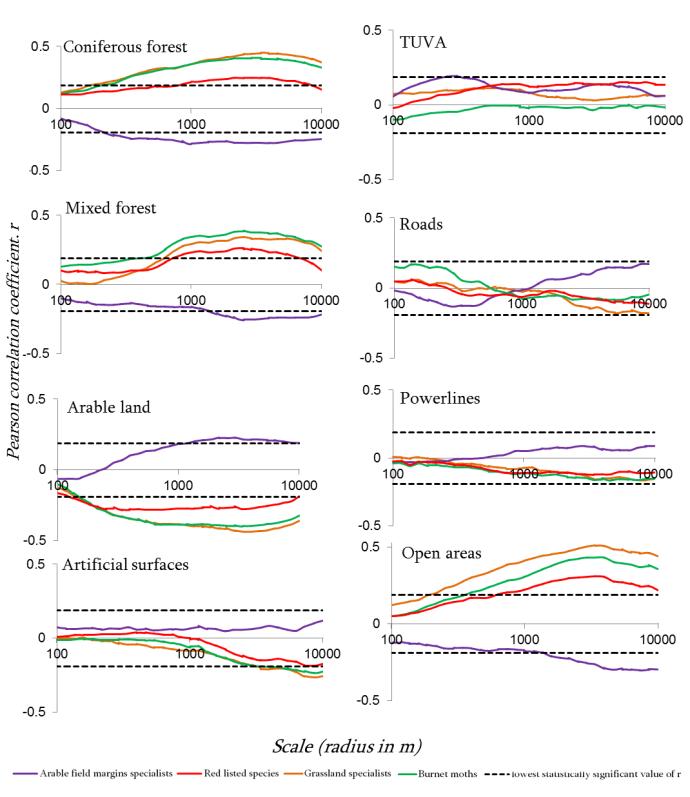Butterfly species richness and the landscape
A total of 82 butterfly species were found in the 473 sites around Sweden. The five most common species were Aphantopus hyperantus, Pieris napi, Coenonympha pamphilus, Polyommatus icarus and Gonepteryx rhamni.
Grassland butterflies and burnet moths’ species richness showed significant positive correlations with the amount of coniferous forest and mixed forest at the 3415 m and 2512 m scale respectively.
All groups of butterflies had a significant negative response to the amount of arable land and artificial surfaces in the surrounding landscape, except for the arable field margins specialist butterflies.
The amount of open areas also had significant effects on the species richness of the butterfly groups. At the 3415 m scale grassland specialists, red-listed species and burnet moths showed a significant positive response.
Regarding the species richness of butterflies as a response to the amount of TUVA semi-natural grasslands, grassland specialists, red-listed species and burnet moths showed a non-significant positive response.
I did not find any effect of the amount of road verges or powerline corridor grasslands over the species richness of the functional groups.

Responsible for this page:
Director of undergraduate studies Biology
Last updated:
05/22/13
